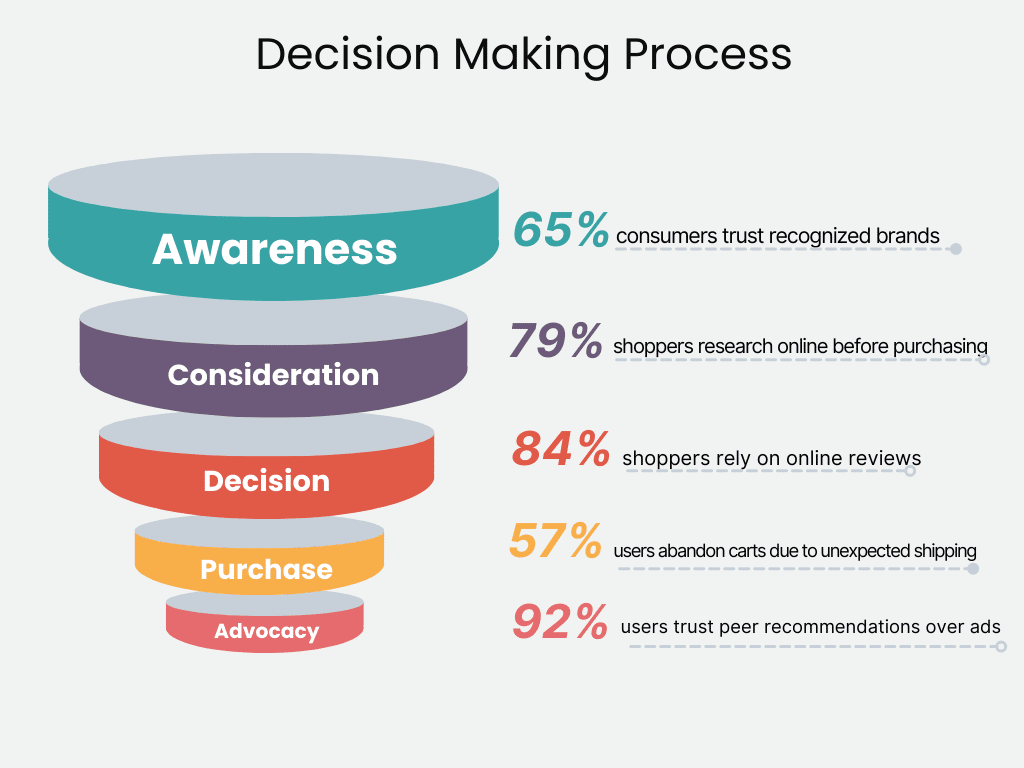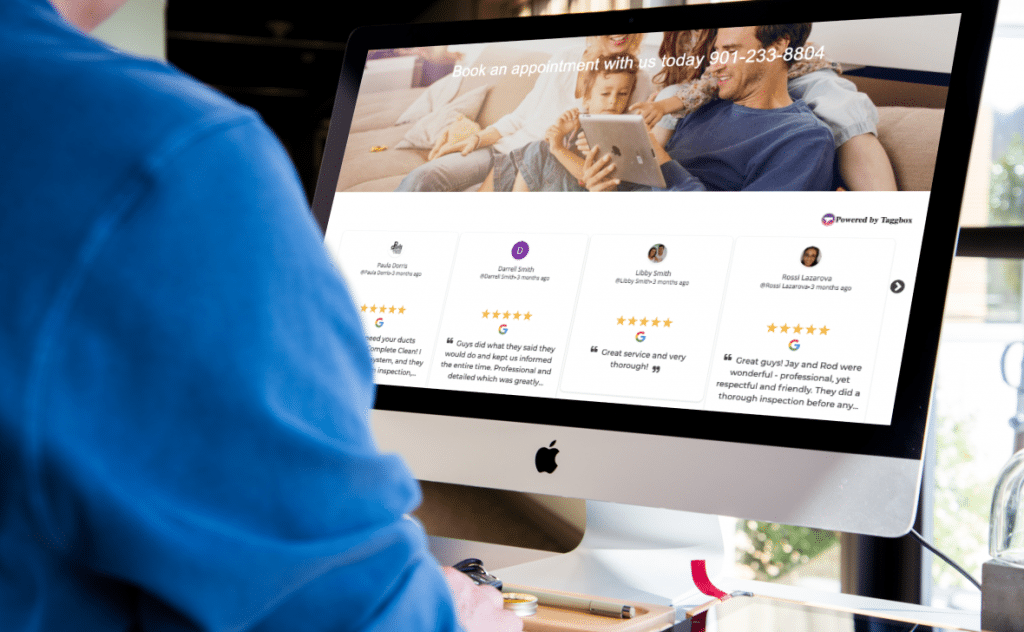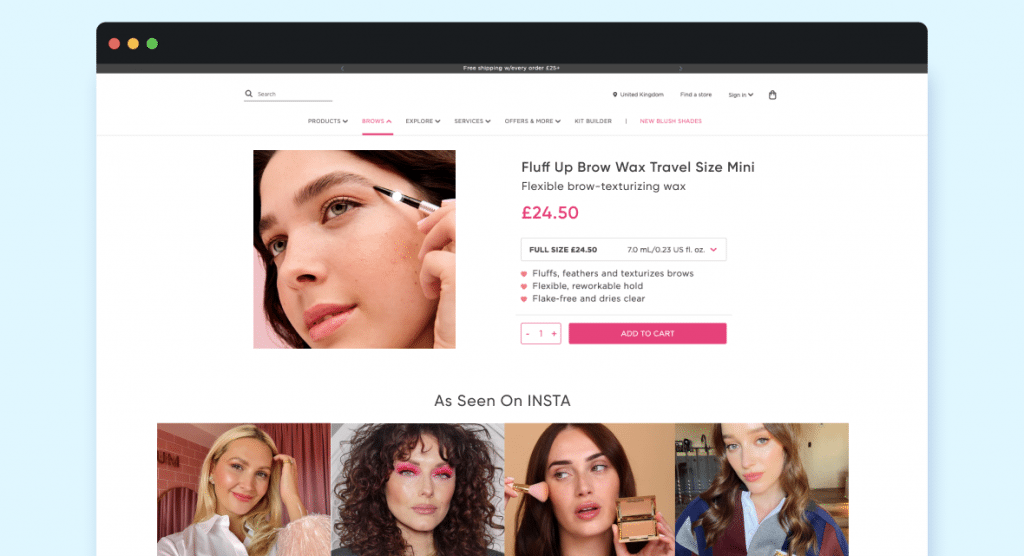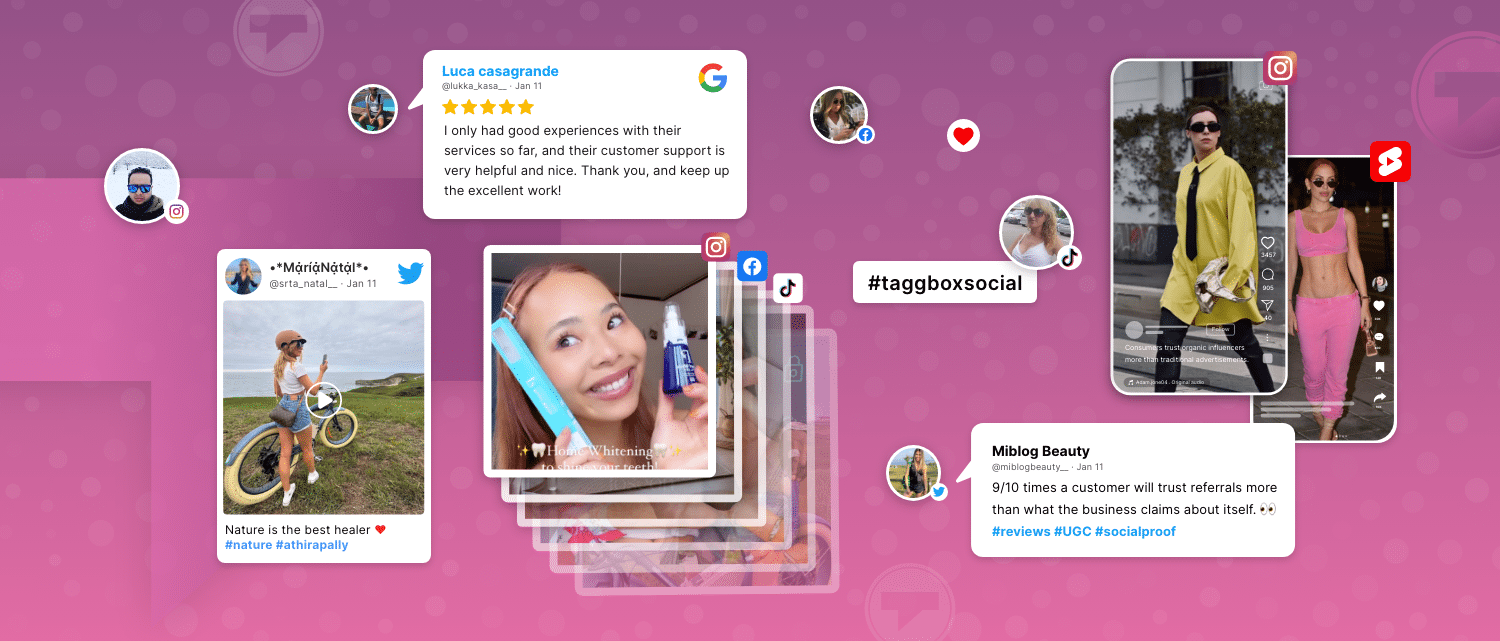As consumers, we are constantly overwhelmed with a myriad of choices when making purchasing decisions.
From choosing a new restaurant to buying a new car, we rely heavily on the opinions and experiences of others to inform our choices.
In today’s digital age, user-generated content (UGC) has become a powerful tool for helping consumers make informed decisions.
UGC refers to any content users create, such as reviews, comments, and social media posts, publicly available for others to view.
In this blog, we will explore how UGC can help in the decision making process and why it has become an essential part of the modern marketing landscape.
What Is the Consumer Decision Making Process?
The consumer decision making process is the series of steps that an individual goes through when considering, evaluating, and ultimately deciding to purchase a product or service. Businesses must understand this process and leverage it to their advantage.
The decision-making process typically consists of five stages:

Let’s understand all these steps in detail and how UGC plays a crucial role in them.
Role Of User-Generated Content In Decision Making Process
Making a good purchasing decision requires considering reviews and other forms of UGC or User Generated Content to gather information and insights about a product or service and to assess the experiences of others.
By leveraging UGC, businesses can influence the consumer decision process and improve the chances of a consumer choosing their product or service.
Awareness: The buyer becomes aware of a problem or need
User-generated content is an effective tool in the awareness stage of the consumer decision-making process.
This is the stage where the buyer becomes aware of a problem or need, and businesses must capture their attention and make a solid first impression.

One effective way to accomplish this is by incorporating UGC into ads. UGC in ads can take many forms, such as customer reviews, testimonials, or social media posts featuring your product or service.
You can establish credibility and build trust with potential buyers by including real-life examples of how your product or service has helped others.
This can help to drive sales and increase brand awareness.
When it comes to UGC advantages, authenticity tops the list. While stock photos may look polished and professional, they lack the genuine feel and personal touch that comes with UGC.
By contrast, UGC is created by real people with real experiences, which makes it more relatable and trustworthy for potential buyers.
Moreover, online audiences dwell a lot on User-Generated Content vs Stock images, trying to understand which one is better. UGC is typically more engaging and attention-grabbing than stock photos.
People are naturally drawn to stories and experiences that resonate with them, and UGC can provide a more compelling and memorable experience than stock photos ever could.

Consideration: The buyer evaluates different options and narrows down the choices
As a savvy consumer today, it’s almost only possible to purchase with research beforehand.
Whether it’s a new pair of shoes, a kitchen appliance, or a new car, we all want to ensure we’re making the right choice. That’s where reviews and feedback come into play.

Reviews and ratings are essential parts of the consumer buying decision process. They provide valuable insights into other customers’ experiences and can help you make informed decisions about which products or services to choose.
Research has shown that over 90% of consumers read online reviews before purchasing.
One of the primary benefits of reviews and feedback is that they allow you to narrow down your choices. When considering several options, reading reviews can help you identify the pros and cons of each one.
You can get a sense of what other people liked and didn’t like about the product or service and use that information to make an informed decision.
But reviews and feedback aren’t just useful for consumers. They’re also valuable for businesses.
When businesses encourage their customers to leave reviews and provide feedback, they gain valuable insights into what their customers like and don’t like about their products or services.
This information can be used to improve the customer experience, which leads to more sales and greater customer loyalty.

Decision: The buyer makes a decision and selects a product or service
When it comes to the last & final stage of the buyer journey, where the buyer decides and selects a product or service, UGC can be particularly effective in influencing that decision.
One way to showcase UGC at this stage is to display it prominently on landing pages. Landing pages are the first impression that a potential customer has of your product or service, and they’re a great place to display positive reviews, customer testimonials, and other types of UGC.

By displaying UGC on landing pages, you can provide social proof and build trust with your potential customers, making them more likely to purchase.
But UGC isn’t just influential on landing pages – it can also be compelling when used to showcase real-life use cases.
When potential customers see how other people use your product or service in their daily lives, it can help them envision how the product or service might fit into their own lives.
This is particularly true for products or services that are more complex or require more investment.
For example, let’s say you’re selling a high-end camera. By showcasing real-life use cases from professional photographers, you can help potential customers see how the camera can be used to capture stunning photos and build a successful photography business.
This can help them justify the investment and decide to purchase the camera.
Purchase: The buyer completes the purchase and becomes a customer
Regarding the second-last stage of the consumer decision journey, where the buyer completes the purchase and becomes a customer, shoppable UGC can be an effective tool in fast-forwarding the process.

Shoppable UGC is a form of UGC that allows customers to purchase products directly from the content they’re viewing.
For example, let’s say a customer is scrolling through their Instagram feed and sees a post from a brand featuring a product they’re interested in.
With shoppable UGC, they can click on the product in the post and be taken directly to a page where they can purchase.
By making the purchase process as seamless as possible, shoppable UGC can help fast-forward the buyer journey and turn potential customers into actual customers.
It removes friction from the purchasing process, making it easier for customers to purchase and reducing the likelihood of abandoning their cart.
One way to incorporate shoppable UGC into your strategy is to encourage customers to share photos of themselves using your products on social media and tag those photos with a specific hashtag or link.
This allows you to collect a library of shoppable UGC that you can feature on your website, social media pages, and other marketing channels.
By showcasing real-life customers authentically using your products, you can provide social proof and build trust with potential customers.
Advocacy: The satisfied customer becomes an advocate, recommending the product or service to others
When customers are happy with a product or service, they’re more likely to share their experience with others and recommend it to their friends and family.
Collecting UGC from all platforms in one place can be an effective way to amplify this advocacy and turn happy customers into brand ambassadors.
Using a UGC platform like Taggbox, you can collect UGC from various sources, such as social media, review sites, and customer surveys.

This can help you to create a more comprehensive view of your customer’s experiences with your brand.
One benefit of collecting UGC from all platforms in one place is that it allows you to curate and showcase the most compelling content easily.
By identifying the UGC that resonates most with your audience, you can feature it prominently on your website, social media pages, and other marketing channels.
This can help to provide social proof and build trust with potential customers, as they can see real-life people using and enjoying your products or services.
Wrapping Up!
In conclusion, user-generated content (UGC) has become a critical tool for businesses to enhance their decision-making process.
With the power of social media and review platforms, consumers now have more influence than ever in shaping businesses’ success.
By leveraging UGC’s power, businesses can better understand their customers’ preferences, pain points, and expectations.
This knowledge can then be used to make more informed decisions that drive growth, increase customer loyalty, and boost revenues.
The benefits of UGC are clear and measurable, and it is up to businesses to take advantage of this valuable resource.
By encouraging customers to share their experiences and opinions, businesses can improve their decision-making process and build stronger relationships with their customers.
As technology evolves, UGC will likely become an even more critical component of the business landscape.

FAQs
Decision-making is choosing between alternatives to achieve a specific goal or objective. It involves analyzing, evaluating options, and choosing based on the best available information and reasoning.
The 7 C's of decision-making are clarity, completeness, correctness, conciseness, concreteness, consideration, and courtesy. These are essential factors to consider when making decisions to ensure they are practical and efficient.
To improve the decision-making process, you can start by defining clear goals and criteria, gathering and analyzing relevant information, considering different perspectives, evaluating the potential risks and benefits of each option, and taking time to reflect on the decision before making a final choice.
A decision-making process involves identifying the decision, gathering information, identifying alternatives, evaluating alternatives, making a choice, taking action, and reflecting on the decision.






